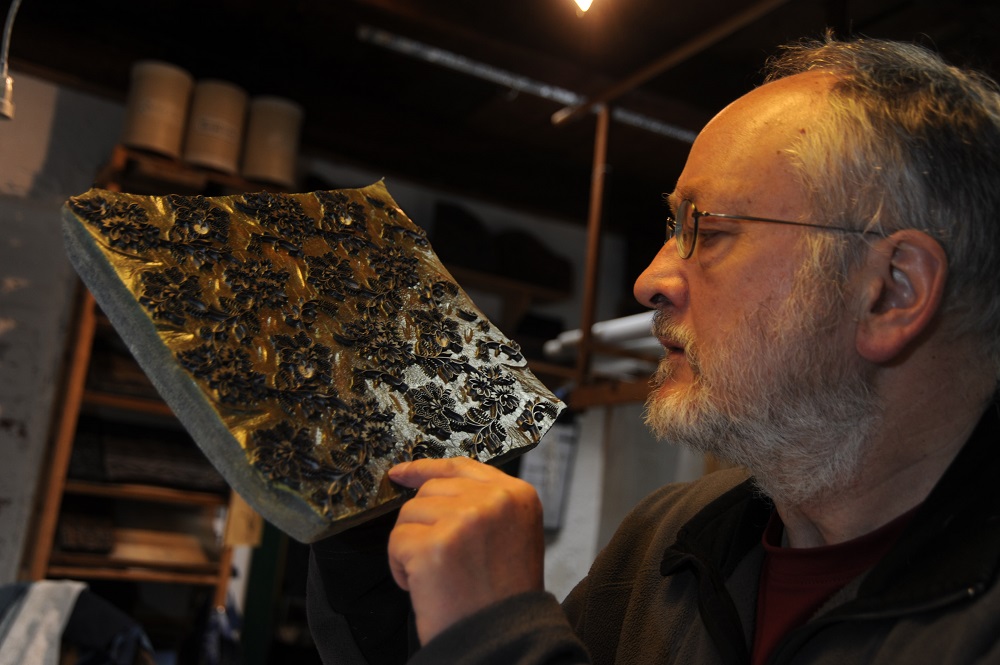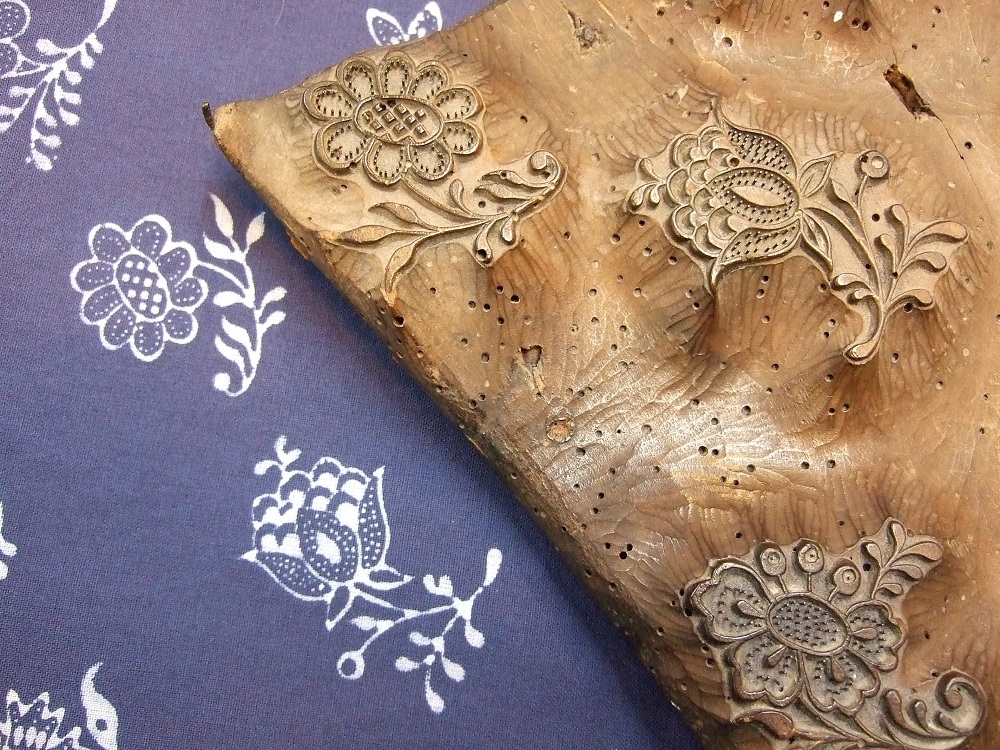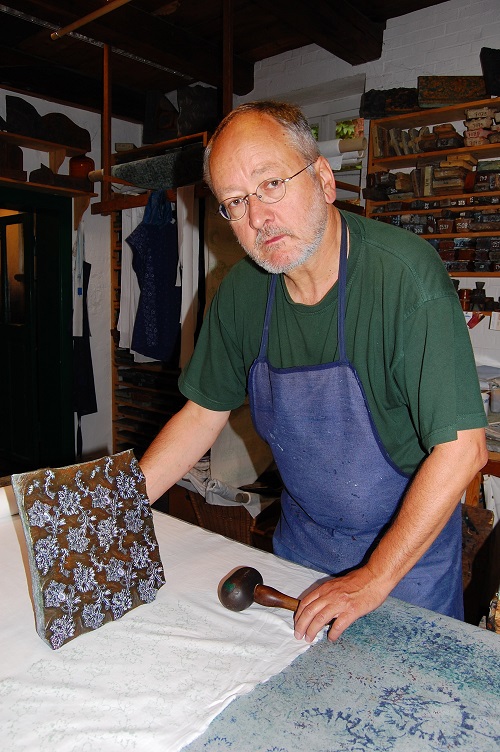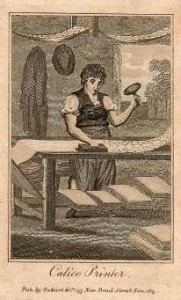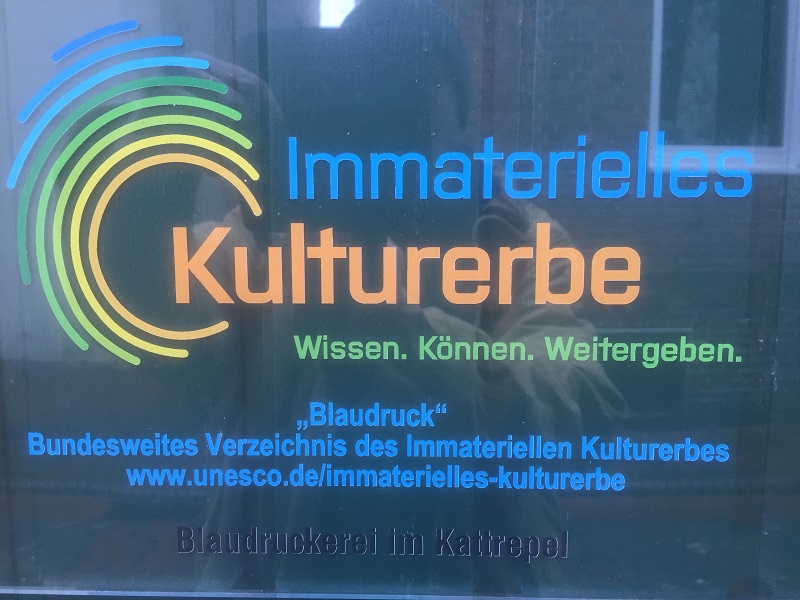Indigo textile printing
The Blocks
The patterns of the fabrics are printed by hand with blocks: they are made of wood, the pattern is carved in wood or built with pins and profiles of brass. 300 years old blocks were made of wonderful box wood, or pear-wood was used until 1900. The blocks were made by special craftsmen, the „formenstecher”.
I collected in my workshop around 460 blocks built in the last four centuries.
The Printing
By using the blocks a sticky substance is printed on the surface of the fabric: the so-called „Druckpapp”. This recipie is around 400 years old and consists of „gum arab, white clay for tobaccopipes, copper vitriol and verdigris, led nitrate and alumen…”. As a resisting paste it kepts the fabric white at the so protected areas.
The Dying
The following blue-dying takes place in the Indigo-vat. The printed fabric is stretched on an iron crone-ring and dipped up to ten times in the vat until the desired depth of the colour is reached.
During the dying-process the visitor can see the so-called „blue wonder” and how the fabric is „beaten green and blue”. After the dying the at first printed resist paste is washed away in an bath of sulphur acid and we found the white pattern on a blue ground.
Intangible Cultural Heritage Blueprinting Craft
My manufactory was declared a bearer of the "Intangible Cultural Heritage Blueprinting Craft" by the German Unesco Commission in 2016.
The History
We Europeans learned around 400 years ago the dying with indigo and the printing of fabrics from the developing trade with India. In the middle ages we knew only the colour plant „woad” which gave a weaker blue. Both plants give us the dying agent from their juice.
Workshops were to be found all over Europe – for example: three „Blaudruckereien” had been working in every century in this little town Jever until they were superseded by the modern industry at the turning of the century.

